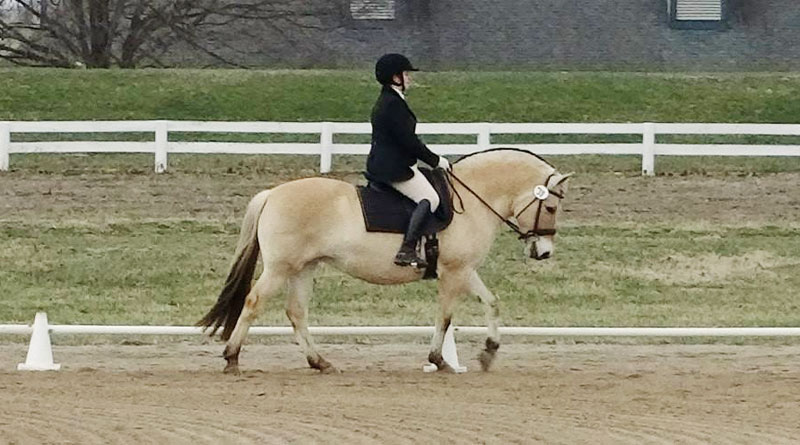
By Erin Hsu
I’m a full-time working mom, lifelong rider and hands-on horse owner who recently switched from dressage to eventing. My Norwegian Fjord mare, Pancake, fits my needs perfectly: a 13.2-hand bombproof jumping machine. She is sound, quiet, smart, deceptively athletic, and a very, very easy keeper. She lives in my Central Kentucky backyard with a Miniature Horse companion.
Combine world-famous lush pastures, lack of exercise, and a prehistoric metabolism, and you have a recipe for obesity. Last year, I fell off the wagon and let the spring grass go to her hips … and belly … and neck. So what’s a horse owner to do? Read the diary of our adventures in equine weight management. We trialed. We error-ed. And we learned a lot along the way that may be helpful to other horse owners.
March 22, 2014
One week until the first show of the season! Our last show in October went great and I’ve ridden at least once a week for the past month, so we are ready. It’s early in the season, so we’ll take it easy and do a combined test—just a dressage test and stadium jumping. No cross-country, so I don’t really need to condition. This is going to be great!
March 30
Or not. I knew Pancake was carrying a little extra weight; I could barely buckle her 52-inch girth. But I didn’t realize she was so fat her maximum aerobic capacity was six stadium fences—on a course of 10. We got to jump seven, I put my leg on … and she pinned her ears and slowed down. (Not the desired response.) And then stopped. And then cleared it from a standstill, which I was not at all prepared for. Thus, I fell off. As I picked myself up, I saw she was breathing way too hard for halfway around a starter course. And that’s when it hit me: I let her get way too fat. This was 100 percent mismanagement on my part.
March 31
My barn was designed for convenience. Stalls open onto a dry lot, which then open into the 5-acre field. The dry lot, about 2,400 square feet, is now the epicenter of Project Pancake. I decided to start the new regime in earnest by limiting her grazing time. I increased her hay to offset the lack of pasture, but she’s not happy with me. Needless to say, she doesn’t get any grain, just a ration balancer to make sure her vitamin and mineral needs are met.
I know weight tapes aren’t accurate—they’re meant to give an estimate and track trends. But I also know my 13.2-hand pony shouldn’t weight-tape at 1,250 pounds.
I’d like to turn her out for a couple hours, but I read a recent study in the Journal of Equine Veterinary Science that showed ponies allowed unlimited access to pasture consumed 3.8 percent of their body weight in grass, and ponies who were restricted for all but three hours per day really put their minds to it and still ate 2.2 percent of their body weight. (The recommended forage intake for weight loss is 1.5 percent.) So I’m going to try reduced pasture time and muzzling in combination, since grazing muzzles reduce intake by about 30 percent. I just need to buy a muzzle.
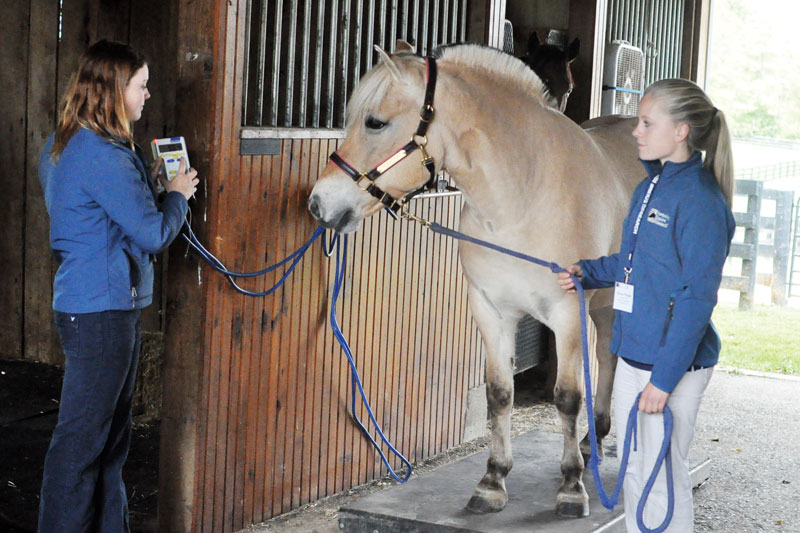
April 1
Pancake is angry. She yells at me every time I walk out in the yard. I’m avoiding windows near the back of the house. She’s kneeling down under the dry lot fence to get any scrap of grass she can reach. I feel mean.
April 2
Hooray! I got a muzzle. I turned her out with it for a couple hours and it seemed to work just fine.
April 4
This is fine. A little more hay, a few more wheelbarrows of manure to empty every week. I put her muzzle on and turn her out for a few hours in the evening. She’s grumpy, but it’s manageable. I can ride twice a week and I found a helper to ride twice a week. Between the two of us, that’s almost a real exercise program. The weight tape says Pancake’s already slimmed a bit. We can handle this.
April 7
I can’t handle this. I brought her in from her three-hour muzzled grazing time and she has big open rubs under her jaw. I must be doing this wrong. It’s time to call in the experts—luckily, I know some.
April 10
I talked to Catherine Whitehouse, M.S., who manages the research program at Kentucky Equine Research (KER), an equine nutrition research and consultation company, which means she is a professional muzzler. Based on her recommendations, I used diaper cream on the rubs and added fleece lining to the top of the muzzle. Pancake’s had a few days without the muzzle (just an hour on grass) to heal, so we’ll try again.
April 12
More rubs. I am a bad mom. And at this point, I’m over it. We’ll just turn out for two hours a day, and I’ll soak her hay to remove some calories from it.
April 20
Our routine is established. She’s working four times a week and fits into her skinny jeans again—a 46-inch girth! High five.
April 27
It rained. And rained. And the grass got green and the footing was bad and then I got too busy to ride. The weight tape now says Pancake is almost 100 pounds more than when we started.
May 7
We’re back on the exercise routine, and I moved her from a ration balancer to low-intake vitamin/mineral supplement for horses with insulin resistance. I’m also feeding her soaked hay in a slow-feed net to extend her eating time, which should help prevent ulcers. I also put her on a digestive buffer. Results? Now the dressage girth is too big.
June 1
My teenage riding helper had the audacity to get a summer job. The summer days are so wonderfully long. How is it that I don’t have time to ride? With soaking hay and daily mucking, my evening barn routine takes three times as long as it used to. On the upside, I fit into my skinny jeans too.
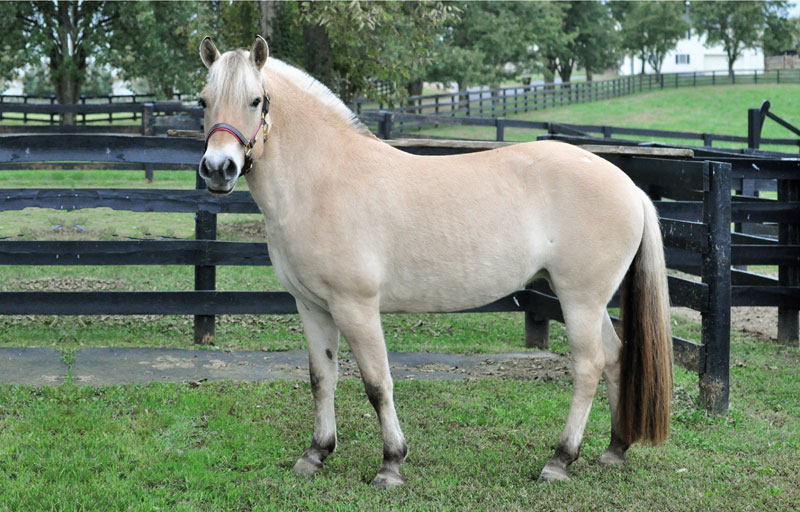
June 16
Pancake is looking great, but there’s a problem under saddle—lack of energy. I started this whole thing because Pancake was too fat to jump an entire course. Now she’s slimmer and she’s too tired to jump because she isn’t eating anything. I asked equine nutritionist Kathleen Crandell, Ph.D., for some help.
According to Dr. Crandell, horses like Pancake are the hardest to deal with because there are so few options for them. Our nutrition guru explained that restricted intake had reduced Pancake’s energy and endurance for work by depleting muscle glycogen stores. Her suggestion was to consider feeding 1/2 to 1 pound of oats a day—not so much as to add a lot of calories to the diet but enough to help her energy stores. “As long as you’re exercising her, that amount shouldn’t be much of a strain on her diet—and she’ll really like you for it,” she promised.
July 1
The oats seem to be working! She feels great at lessons.
July 2
Pancake is lame. She’s spending about 20 hours a day down on her left knee, reaching her stumpy neck under the dry lot fence to grab pitiful tiny tastes of grass. Now her knee is swollen and hot, with a big bubble of fluid. I really don’t want to keep her stalled 24/7. Maybe I should just sell her to someone in Arizona.
July 3
The vet says the knee will be fine, if she’ll stop walking on it. My little dry lot is now outfitted with a line of hot rope along the bottom board, powered by a 5-mile charger.
July 12
Pancake is looking svelte and is perfectly sound for work, but I just can’t ride often enough to improve her cardio fitness and ability to handle the heat. I find myself looking for used horse treadmills on Craigslist.
August 1
We made a new friend! A horseless endurance rider can put Pancake through her paces twice a week.
August 18
Now that we have conditioning help, I decided to try entering a show. It’s a horse trial, including cross-country. She’s been feeling great, but I’m worried she’s going to run out of steam on course again. My best defense at this point is cardio work.
September 19
Event prep mode is in full swing. I use a timer to make sure we canter for nine minutes straight at least twice a week. She’s jumping great at lessons. She feels ready. Me? I’m not so sure.
September 27
Show time. My cross-country optimum time is only five minutes. Given our recent conditioning program, we should be able to handle that.
September 28
After a solid six months of weight loss and conditioning, Pancake felt like a different horse at this show. I was worried she would get tired, but we were actually closer to having faults for going too fast! All the extra work was worth it to jump around confidently and see her breathing recover from cross-country before we even walked back to the trailer.
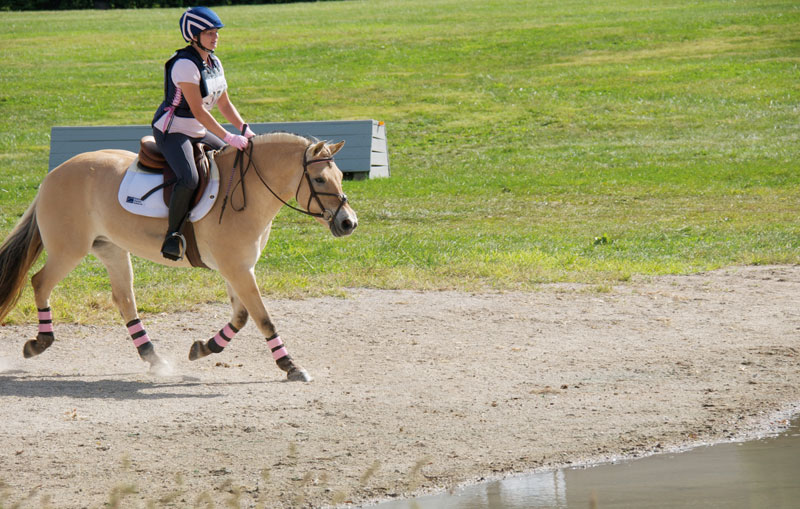
Epilogue
I continued Pancake’s dry lot management until mid-November. Because sugars in the grass tend to spike after the first autumn frost, I wanted to keep her mostly off pasture until that time had passed. Over the winter, she’s enjoying full-day turnout on dormant pasture. Her late-season weight plateaued at a healthier level than it was last spring, and it will be up to me to watch for the first signs of greening and bring her back in before it gets out of control.
I recently had an opportunity to put her on an electronic horse scale. While the weight tape still said 1,130 pounds, her actual weight was 936.
The standard advice if your horse is overweight is “exercise more and put them in a dry lot.” It sounds simple. The reality is more mucking, more bedding, soaking hay, treating skin rubs, finding a qualified helper to ride, installing an electric fence, plus buying a muzzle, a slow-feed hay net, supplements, and two smaller girths. But the end result is worth it: A sound, healthy horse that’s happy and able to do her job.
ERIN HSU is an equine-industry digital marketer living in Georgetown, Ky. She aspires to dominate the local leadline circuit with Pancake and her daughter, Rowan.
This article originally appeared in the May 2015 issue of Horse Illustrated magazine. Click here to subscribe!


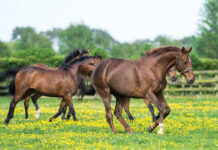


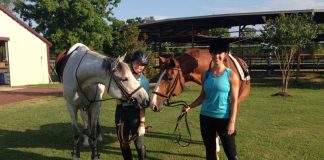

My husband knows just how Pancake feels, and it seems both dieters are going to make it.
great info
Good article except that Pancake is not a Haflinger, but a Norwegian Fjord.
It’s great to read articles on horses weight loss and management – with such a busy culture it’s hard to find time to ride 6 days a weeks, leading to an overweight horse 🙁
This horse is a Norwegian Fjord Horse. Not a Haflinger.
Thank you for the nice article.